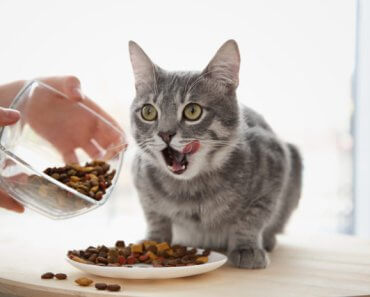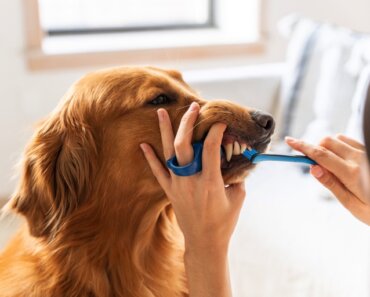The beginning signs of periodontal disease in dogs can start as early as the age of three. Good oral health is crucial for the overall health of your dog. Having poor oral health can lead your dog to have serious heart, liver and kidney problems, along with eye issues and oral cancer.
Are you unsure if your dog is exhibiting signs of periodontal disease? Here are the top 3 early signs to watch out for:
1) Bad Breath
Bad breath means that there are too many bad bacteria in your dog’s mouth as a result of a build-up of tartar, which is the precursor to gum disease.
“Doggie breath is not normal and it is preventable,” said Dr. Jan Bellows, DVM., Dipl., AVDC, ABVP.
2) Inflamed Gums
The next sign your dog might have periodontal disease or may be on the road to getting it in the future is if they have inflamed gums. Raise your dog’s lips and open its mouth to look at the tooth gum line.
To know if your dog’s gums are inflamed, check to see if their gums are redder or more swollen than usual, or if they start to bleed when you brush their teeth. These are all indicators that your dog could have gingivitis, a step leading to periodontal disease.
The bleeding of gums allow ‘bad guy’ bacteria to use that circulatory system as a racetrack to vital organs.
3) Loose, Missing or Discolored Teeth
Lastly, take a look at your dog’s teeth. Check to make sure they have all their teeth and if any of the teeth they do have, appear to be loose. Loose or missing teeth are a big indicator that something is wrong with your dog’s oral health and you should take your dog to the vet for a check-up as soon as possible.
Discoloration like yellow or brown teeth is another sign that your dog may have periodontal disease.
Many pet parents think that the once-a-year vet dental cleanings are enough to stave off periodontal disease, but this isn’t true. It only takes a few weeks for plaque to build up on your dog’s teeth, which means that periodontal disease can progress quickly.
That’s why it’s important to have an at-home oral care routine so your dog doesn’t fall victim to an easily preventable disease.
Dr. Bellows believes that the best time to start a daily oral care routine is when your puppy is 6 months old. “Right from the beginning, right when the pet is 6 months old you must start something proactive, daily, to help your pet prevent periodontal disease.”
Yummy Combs®: The #1 Dental Dog Treat
One of the best and easiest ways to take care of your dog’s oral health is by giving them a daily dental treat like Yummy Combs®!
Yummy Combs® is a superior dental treat because it is VOHC Approved for Controlling Tartar! These revolutionary dog treats have a unique, functional, patented honeycomb-like design that scrubs away harmful tartar and flosses the upper and lower gum line giving teeth a 360° clean.
Along with being a great at-home dental care option, Yummy Combs® is also nutritious with 12 wellness ingredients and 47% superior animal protein, and less than 6.5% of starch, and is safe due to 3 safety patents that deter gulping, choking and blockages AND they are delicious, dogs dance and wiggle with joy for their daily Yummy Combs® treat!
What are you waiting for? Improve your dog’s oral care and get Yummy Combs® dental dog treats today!




























